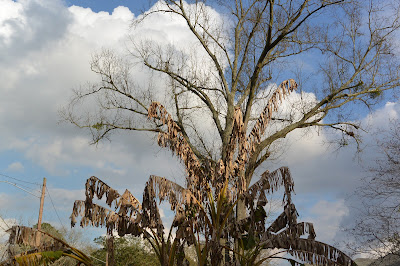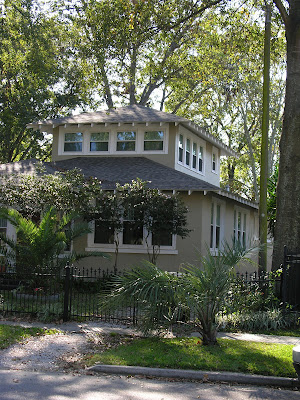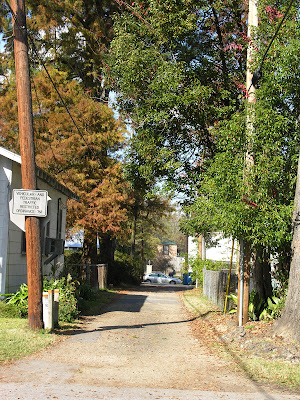I don’t feel quite so stupid anymore, except that I ought to
have suspected the usual bestrewing of epithets.
I knew about Queen Anne tables and chairs. My grandfather, though not formally
schooled in history of interior design, knew a California version of “Queen Anne” and showed me the legs and
feet and arms. And of course
sometimes you see the style on one or the other of the Antiques Roadshow: lovely
stuff, of the nicest hard woods and of a refinement that makes it like a living
thing.
And I knew fin de
siècle furnishings, which it would be polite to call Italianate, found in
houses, rather more than a century old now, in Oakland, CA, and San Francisco,
where the architecture itself was often fanciful to the last degree. From Edward Hopper, who had favorite
ones that he painted, I knew that they also existed in what he’d call the West;
his House by the Railroad is one
such. We called this sort of
house, brilliantly exemplified by the Carson Mansion in Eureka, CA, “Late
Victorian”—not, we made haste to explain, that Victoria was our queen, but
“gilded age” wouldn’t do very well since the “robber barons” didn’t use it
regularly.
When the person who wrote up the Baton Rouge Reiley-Reeves
house called it untutored Queen Anne, I was puzzled, since the house (which I
admire) seemed to me to have nothing of the maniera
of the “painted ladies” (to give the most elaborate ones that I knew from
California our favorite nickname).
These, though, were the type of house that the McAlester Field Guide
(see Basic Reading list in Post for January 28) called Queen Anne. In the usual way of the internet (and
don’t blame the Wiki, which tries to avoid such copy-and-paste), the words
Queen Anne keep appearing later for our house; can they have come from any legitimate source?
How did the name given to chairs and tables of the same
period as the chinoiserie of Chippendale and French Louis XV come to be given
to domestic architecture (indeed the American Vernacular of Late Victorian) two
centuries later and, so far as I could see, unrelated?
It may be dangerous to trust another far-western source (for
I swear that in the San Francisco Bay Area I had never heard the usage), but
the web site of the Seattle, WA, Queen Anne Society (http://www.qahistory.org/queen-anne-style.html),
paragraph 2, has the answer. Using this moniker, as I suspected, is
a bit of architectural merchandising, and Richard
Norman Shaw was responsible for it.
Yes, it is what the McAlesters also call Free Classic (so, I may add, do
Sears, Roebuck, et al.). Note, in
Wikpedia, s.v. Queen Anne, that the Australian dialect, so to speak, of QA is
most like the US American.
In his Outline,
Nicholas Pevsner used the façade of a “Queen Anne House” to illustrate the
names of its parts. Period. It looks sort of “Federal” to me. No wonder I didn’t know QA as a label
for an architectural style! I am a
child of the generation that read Pevsner. But look, s.v. Richard
Norman Shaw in Wikipedia, and you will find, ‘Richard Norman Shaw's
houses soon attracted the misnomer the "Queen Anne style"’. I don’t know who said that, but the
relationship seems plain. His work
is very attractive, very sound, but he was hardly a “pioneer of modern design”. It was only a happy chance that made me
suggest that using Queen Anne’s name was like our using Kate Greenaway’s, since
Shaw in fact designed Kate Greenaway’s house
Anyhow, let me go back to Baton Rouge’s house on Park Boulevard at
Cherokee. First, it is too late to
be like the houses of the 1880s and 1890s. “Untutored” seems a bit impolite. It seems to me the kind of house that a man born in New
Jersey, who had made his way socio-economically on the west side of the
Mississippi, over towards Lafayette, wanted as his town house in the state
capitol. And it wasn’t as if Baton
Rouge or Lafayette, LA, had quite the sort of house that he may have remembered
from New Jersey. Of course, he
knew what plantation houses were like, but this was for town. The result is hard (nay, impossible) to
simply label, but it is handsome and it is well built, very well built, solid
after just over a century. As my
consultants up in Missouri said, it is more graceful without the added roof
over the veranda, as in its first photo.
And its doorway is very elegant indeed. I don’t know whether Baton Rouge
ever had more pre-WW I town houses of
this size. So much has been
replaced.
Personally, I owe to this house the education (such as it is) that I have been
forced to acquire about the usage “Queen Anne”.

































